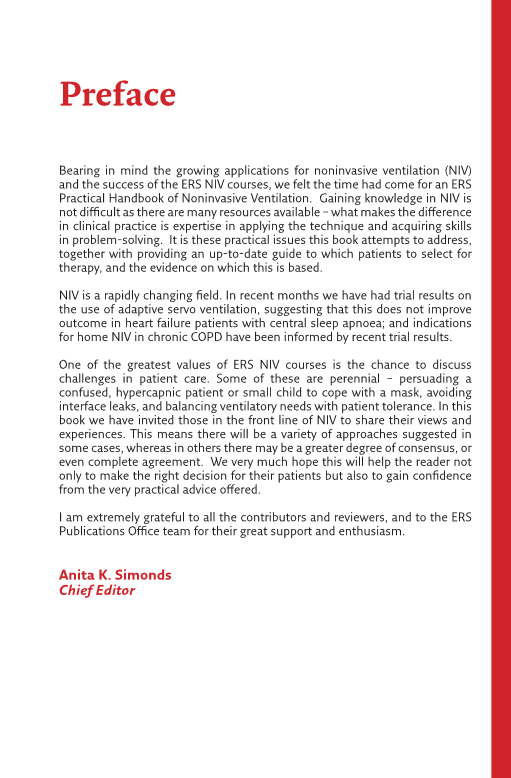Preface Bearing in mind the growing applications for noninvasive ventilation (NIV) and the success of the ERS NIV courses, we felt the time had come for an ERS Practical Handbook of Noninvasive Ventilation. Gaining knowledge in NIV is not difficult as there are many resources available – what makes the difference in clinical practice is expertise in applying the technique and acquiring skills in problem-solving. It is these practical issues this book attempts to address, together with providing an up-to-date guide to which patients to select for therapy, and the evidence on which this is based. NIV is a rapidly changing eld. In recent months we have had trial results on the use of adaptive servo ventilation, suggesting that this does not improve outcome in heart failure patients with central sleep apnoea and indications for home NIV in chronic COPD have been informed by recent trial results. One of the greatest values of ERS NIV courses is the chance to discuss challenges in patient care. Some of these are perennial – persuading a confused, hypercapnic patient or small child to cope with a mask, avoiding interface leaks, and balancing ventilatory needs with patient tolerance. In this book we have invited those in the front line of NIV to share their views and experiences. This means there will be a variety of approaches suggested in some cases, whereas in others there may be a greater degree of consensus, or even complete agreement. We very much hope this will help the reader not only to make the right decision for their patients but also to gain condence from the very practical advice offered. I am extremely grateful to all the contributors and reviewers, and to the ERS Publications Office team for their great support and enthusiasm. Anita K. Simonds Chief Editor
